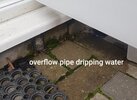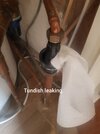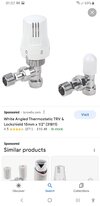- Joined
- 10 Feb 2023
- Messages
- 9
- Reaction score
- 0
- Country

We have 8 rads in total and 1 towel rail but unsure how to calculate what final pressure should be.
Over weekend bubbling sounds from top rad and variable heat.
Interestingly we've also noticed that when the hot water is turned on with the heating the tundish and overflow pipe also leak ..could this be contributing to the drop in pressure or indicative that the expansion vessel needs replacing or another problem not yet defined?
Over weekend bubbling sounds from top rad and variable heat.
Interestingly we've also noticed that when the hot water is turned on with the heating the tundish and overflow pipe also leak ..could this be contributing to the drop in pressure or indicative that the expansion vessel needs replacing or another problem not yet defined?




